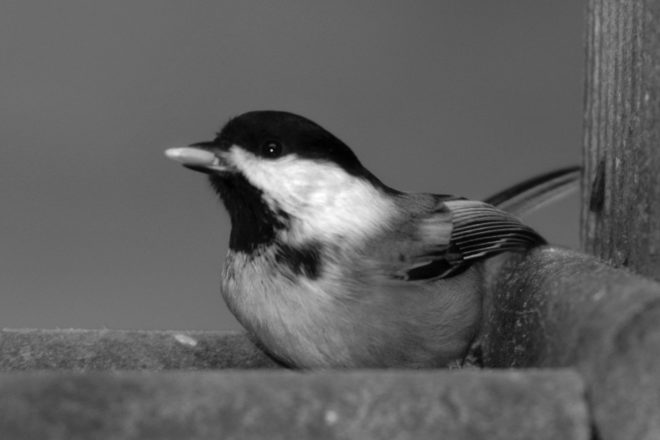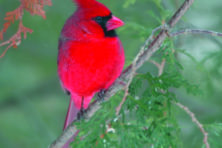Door To Nature: How Birds Survive Winter
- Share
- Tweet
- Pin
- Share

After the warmest December on record, we were faced in the first part of January with sub-zero wind chills and warnings to stay indoors. I put food out several times a day for the flocks of pine siskins, purple finches, American goldfinches, dark-eyed juncos and resident chickadees and nuthatches.
The woodpeckers are eating the suet and marvel meal faster than normal. This food provides protein and fats that may help them conserve energy and survive. The abundance of the acorn crop kept blue jays here, but now that food is covered in deep snow, so the jays are dominating the feeders.
One wonders how the smaller birds can withstand about 15 hours of inactivity during the night and survive. Birds that are capable of wintering at our latitude have several advantages that help them live through these brutal cold periods.
Birds are the only creatures on Earth that have feathers, along with cutaneous muscles in the skin that allow them to fluff out or pull in their feathers. I notice that as soon as a bird lands on one of the feeders, it puffs out its plumage. This traps air in the downy feathers near its flesh, which in turn helps the bird conserve body heat.
Years ago, Roy conducted an interesting experiment with his science class by filling a large paper bag with the silky seeds of milkweed plants. One student at a time pushed their hand into the bag, surrounding it with wispy, “long-haired” seeds. Within seconds, they were amazed at how warm their hands felt.
The legs and feet of birds are developed quite differently than ours to prevent them from freezing. Birds’ legs and feet lack the extensive capillary systems found in human extremities. The bird’s blood vessels in their legs are interconnected by large tubules, which suffuse their legs and feet with a constant movement of warm blood. Furthermore, their legs and feet are composed primarily of chitinous tissue that is very slow to freeze.
It’s fortunate that the birds also have a very high metabolic rate. A black-capped chickadee’s heartbeat on a typical warm-weather day is somewhere between 400 and 500 beats per minute. This nearly doubles to around 1,000 when the bird is in flight or is under the great stress of severe cold.
Interestingly, a chickadee’s heartbeat slows down considerably during the night. The bird goes into a state of torpor in its relatively secluded roosting cavity along with several others of its kin, thereby helping conserve energy. We have seen eastern bluebirds packed into nest boxes overnight in cold weather, too.
Bird banders who weigh and measure nesting chickadees from different latitudes have found that those birds in the north tend to have larger bodies, giving them less body surface area in proportion to their weight. This helps them survive extremely cold temperatures more easily.
An interesting discovery is that the northern birds’ beaks, legs and wings tend to be shorter than those of their southern cousins. These extremities lose heat more rapidly than the larger parts of their bodies.
Another way birds survive the cold is by shivering. The thought is that small birds like pine siskins, American goldfinches, chickadees and golden-crowned kinglets shiver constantly on the coldest of days.
Amazingly, golden-crowned kinglets are rather common in the conifer forests of Door County in winter. This species is the second-smallest in size to the ruby-throated hummingbird, and has frequently been found during Christmas bird counts.
I wish there was an easy (and warm) way to trace every movement of one small bird from its first appearance at the feeders at around 7 am until it retires at about 4 pm. I’m sure we’d be amazed at how well that individual knows its little world of several acres.
Surely one of the things we’d learn is that this tiny creature chooses its favorite resting spots very carefully, finding areas that are sheltered from the wind as much as possible. Birds know their habitat very well and can find food and protection not only from the weather but also from predators.




